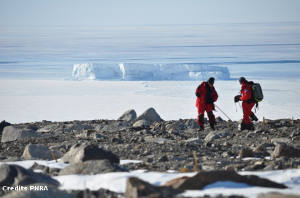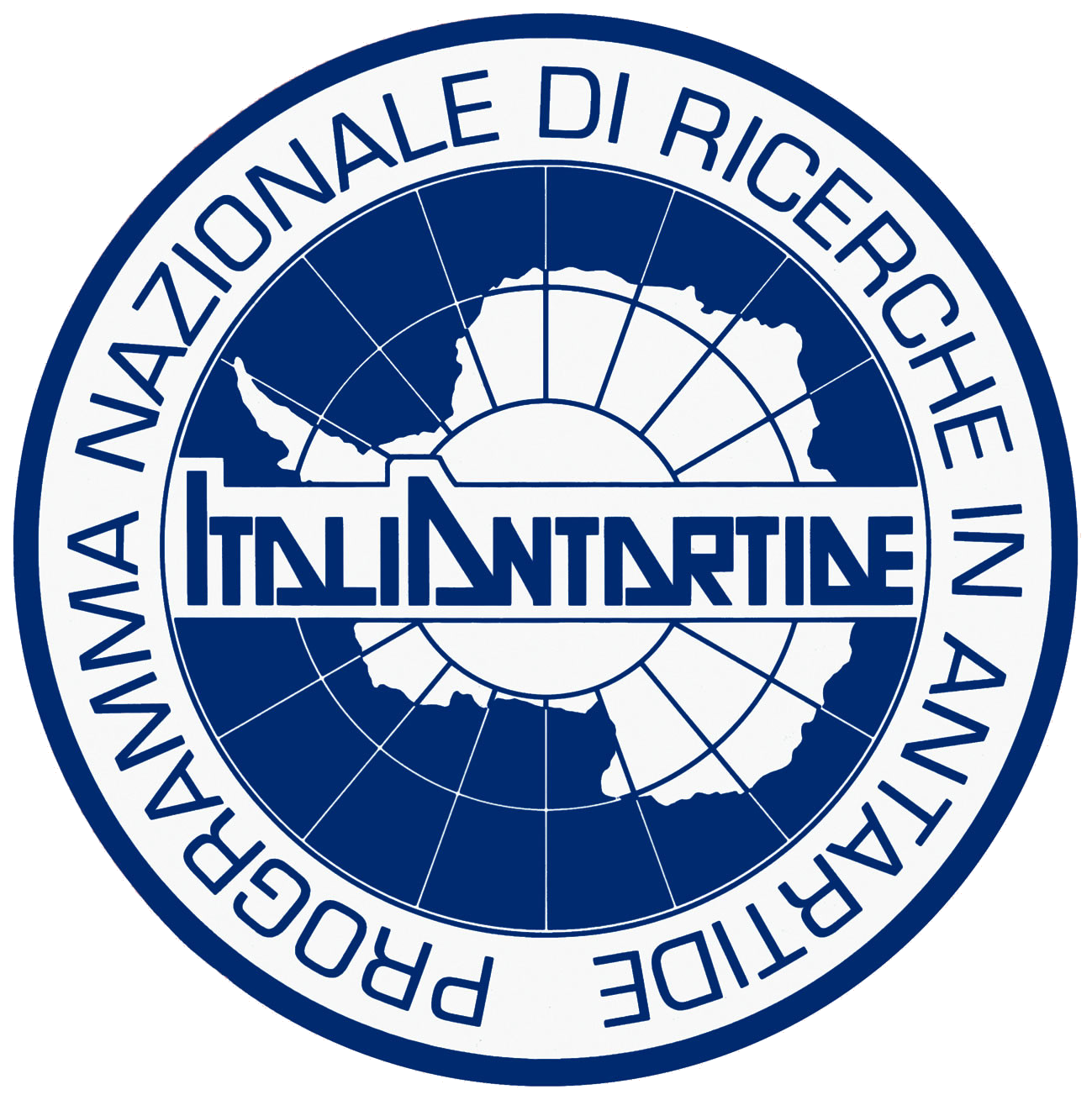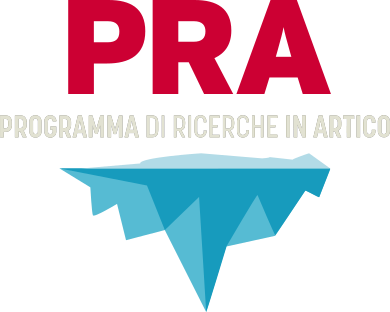English_content
 Master's degree in Exploration Geology (University of Rome "La Sapienza"), PhD in Science and Management of Climate Change (Cà Foscari University of Venice, OGS Trieste and University of Otago, New Zealand) funded by the Italian National Research Program in Antarctica (PNRA). Current position: research fellow at the Institute of Polar Sciences of the CNR (CNR-ISP) in Bologna. Previously assistant researcher at the geochemistry laboratory of the University of Otago in New Zealand.
Master's degree in Exploration Geology (University of Rome "La Sapienza"), PhD in Science and Management of Climate Change (Cà Foscari University of Venice, OGS Trieste and University of Otago, New Zealand) funded by the Italian National Research Program in Antarctica (PNRA). Current position: research fellow at the Institute of Polar Sciences of the CNR (CNR-ISP) in Bologna. Previously assistant researcher at the geochemistry laboratory of the University of Otago in New Zealand.
Currently the research concerns the study and characterization of the terrestrial organic carbon along the Adriatic margin through stable carbon isotopes and organic markers as part of the PRIN-PASS 2017 Project.
 Associate professor at Ca' Foscari Unvierity of Venice (Italy) since 2019. He holds a PhD degree in Chemistry at Ca' Foscari (2011). The research interests have been focused on the development of electroanalytical methods for sensing and imaging (SECM). Since 2013, the research activity has been focused on the development of analytical methods mainly based on GC/MS and their application in environmental science and palaeoclimatology. He has been the coordinator of the project of Ateneo 2015 "The last tree standing" and of the project INSIDE in the framework of the programme SPIN 2018. Ha has been coordinator unit of the project Evasion in the framework of the PNRA 2016 programme. The research activity led to the pubblications of 39 papers with more than 400 citations (H-index 12). Since 2019 he is member of the editorial board as academic editor of the journal PlosONE and referee of a number of scientific journals.
Associate professor at Ca' Foscari Unvierity of Venice (Italy) since 2019. He holds a PhD degree in Chemistry at Ca' Foscari (2011). The research interests have been focused on the development of electroanalytical methods for sensing and imaging (SECM). Since 2013, the research activity has been focused on the development of analytical methods mainly based on GC/MS and their application in environmental science and palaeoclimatology. He has been the coordinator of the project of Ateneo 2015 "The last tree standing" and of the project INSIDE in the framework of the programme SPIN 2018. Ha has been coordinator unit of the project Evasion in the framework of the PNRA 2016 programme. The research activity led to the pubblications of 39 papers with more than 400 citations (H-index 12). Since 2019 he is member of the editorial board as academic editor of the journal PlosONE and referee of a number of scientific journals.
Since 2013 he has in charged the teaching activity in Climate of the Past (Environmental Science), Chemical Methods for Cultural Heritage Materials (Conservation Science and Technology for Cultural Heritage) and Analytical Chemistry (Chimica e Tecnologie Sostenibili).
Since 2016 he has been member of the Didactic Board and member of the Quality Assurance (AQ) Board in Conservation Science and Technology for the Cultural Heritage at University Ca’ Foscari of Venice. Member of the PhD Program in Environmental Science of University Ca’ Foscari of Venice and Member of the Joint Committee Professors – Students (Commissione Paritetica Docenti – Studenti CPDS)
 Graduate in Chemistry and Pharmaceutical Technology in 1991 at the University of Florence, in 1998 Philosophy Doctor in Environmental Science with the thesis Study of Antarctic ecosystem by ice core chemical analysis. Since 1999 she has a permanent position at the Department of Chemistry - University of Florence. In 2013 and 2017 she obtained the National Abilitation for Professor in Analytical Chemistry and in 2017 she obtained the National Abilitation for full Professor in Analytical Chemistry.
Graduate in Chemistry and Pharmaceutical Technology in 1991 at the University of Florence, in 1998 Philosophy Doctor in Environmental Science with the thesis Study of Antarctic ecosystem by ice core chemical analysis. Since 1999 she has a permanent position at the Department of Chemistry - University of Florence. In 2013 and 2017 she obtained the National Abilitation for Professor in Analytical Chemistry and in 2017 she obtained the National Abilitation for full Professor in Analytical Chemistry.
Now she works on the application of innovative highly performance analytical methods for the determination of ions and metals in environmental matrices, mainly aerosols, snow and ice. The research activity is focused on the study of the atmospheric aerosol sources and transport processes in areas with different anthropogenic impact, with particular attention to polar areas (Arctic, Antarctica) and marine areas in the central Mediterranean basin. An important part of her research activity is the study of the cycles of natural substances, the anthropogenic contributions and the aerosol-climate interaction for present time, by aerosol measurements, and for the past by chemical analysis of ice cores drilled in Antarctica. She is Editor of the following Journal/issue:
- Special issue jointly organized between Biogeosciences and Atmospheric Chemistry and Physics, Atmospheric deposition in the low-nutrient-low-chlorophyll (LNLC) ocean: effects on marine life today and in the future.
- International Journal Environmental Research and Public Health – Section “Environmental Chemistry and Technology” (IF 2018 = 2.468).
She is author/co-author of 117 and 122 publications from ISI Web of Science and Scopus respectively and she has H-index of 30.
 She took her degree in Physics at the University of Padua in 1999 and her PhD in Science for Conservation of Cultural Heritage at the University of Florence in 2007.
She took her degree in Physics at the University of Padua in 1999 and her PhD in Science for Conservation of Cultural Heritage at the University of Florence in 2007.
She joined the National Research Council of Italy in 2002 where she won a permanent position as a researcher in 2011. From 2002 to 2019 she worked at the Institute of Atmospheric Science and Climate (ISAC), Padua, then she moved to the Institute of Polar Sciences (ISP), Venice, where she is currently researcher.
Her research interests are in the fields of Atmospheric physics, Climatology and Microclimatology, Environmental Sciences.
At ISAC, she started working in microclimatology applied to the preventive conservation of cultural heritage assets, indoor environmental quality and energy saving, developing a large experience in multidisciplinary research projects. Then her research activity was more and more focused on climatology. Currently, her interest is on one side in climatic change research through the recovery, correction and analysis of proxy and instrumental series of climatic data; on the other in the study of atmospheric physical parameters and processes to investigate the energy balance and the polar climatic system. She was member of the coordination team of many FP5, FP7and H2020 European projects, and investigator in international and national projects. She was contract professor for masters and specialized course, tutor of PhD, BSc and MSc thesis.
Scopus - Author ID: 55370745600 ![]() http://orcid.org/0000-0002-8408-0102 WoS Researcher ID: AAD-8969-2020 Research Gate: Francesca Becherini
http://orcid.org/0000-0002-8408-0102 WoS Researcher ID: AAD-8969-2020 Research Gate: Francesca Becherini
 Graduated in Chemistry and Pharmaceutical Technologies in 1993, researcher at ISPRA since 2000. Head of the oceanography and Contamination of Aquatic Environments laboratory since 2009 at the ISPRA in Chioggia. My analytical expertise concerns the chemical characterization (elemental and isotopic) of dissolved, particulate and sedimentary organic substance in marine environments, transition waters and polar environments; analysis of contamination of water, sediments and organisms by organotin compounds; characterization of the stable isotopes of carbon and nitrogen in the trophic chain; analysis of dissolved nutrients in marine, transitional and polar waters. My activity focuses on the planning of the analytical activity required by the various institutional, national and European projects, in the evaluation of the quality of the data produced with the drafting of reports, field activities (boarding) and participation in institutional meetings and international conferences. In addition to my scientific activity, 70 international publications and 70 or more participations in conferences and posters, I am involved in terms of my chemical skills in national working groups and institutional roles, in particular as an expert and national representative in the established technical working groups at the European Commission and UNEP/MAP for the Barcelona Convention on the issue of contaminants since 2014. Since 2020 reference for Italy for WISE 6 -NRC for reporting activities.
Graduated in Chemistry and Pharmaceutical Technologies in 1993, researcher at ISPRA since 2000. Head of the oceanography and Contamination of Aquatic Environments laboratory since 2009 at the ISPRA in Chioggia. My analytical expertise concerns the chemical characterization (elemental and isotopic) of dissolved, particulate and sedimentary organic substance in marine environments, transition waters and polar environments; analysis of contamination of water, sediments and organisms by organotin compounds; characterization of the stable isotopes of carbon and nitrogen in the trophic chain; analysis of dissolved nutrients in marine, transitional and polar waters. My activity focuses on the planning of the analytical activity required by the various institutional, national and European projects, in the evaluation of the quality of the data produced with the drafting of reports, field activities (boarding) and participation in institutional meetings and international conferences. In addition to my scientific activity, 70 international publications and 70 or more participations in conferences and posters, I am involved in terms of my chemical skills in national working groups and institutional roles, in particular as an expert and national representative in the established technical working groups at the European Commission and UNEP/MAP for the Barcelona Convention on the issue of contaminants since 2014. Since 2020 reference for Italy for WISE 6 -NRC for reporting activities.
Since 2021, I have been participating in the Arctic Table at the Ministry of Foreign Affairs and International Cooperation (MAECI). National expert for the D4 and D8 descriptors in the Marine Strategy (MSFD) WGs and TSGs since 2017 in the European Expert Network on Contaminants group European Commission Joint Research Center (JRC).
Participation in several European projects MEDREGION (Support Mediterranean Member States towards the implementation of the Marine Strategy Framework Directive new GES Decision and programs of measures and contribute to regional/subregional cooperation), PNRA PROPOSE (Processes controlling the presence and distribution of pollutants in Ross Sea Area); HarmoNIA (Harmonization and Networking for contaminant assessment in the Ionian and Adriatic Seas), Interreg Program ADRION, European Marine Observation and Data EMODNET Chemistry Service Contract No. MARE/2012/10 – Lot 4 Chemistry; VECTOR LINE 6 The role of the Northern Adriatic continental shelf in Mediterranean carbon cycles (CARADRI); 2009 PNRA Trace metals in the Antarctic food web.
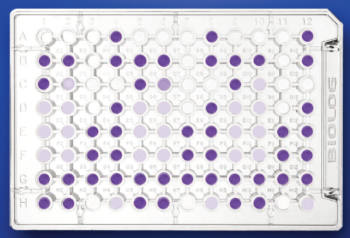
Brief description
The experimental activities carried out at the BioChem Lab in Rome are focused on the study of the effects of legacy and emerging organic micropollutants on organisms belonging to different levels of the trophic web (from microbial communities to higher organisms) in the context of ongoing climate change. The analytical determinations on the biota are aimed at evaluating bioaccumulation and biomagnification processes of target pollutants. Other studies performed at the BioChem Lab focus on:
- The degradation rates (evaluation of the half-life time - DT50 - and determination of metabolites or transformation products of target compounds) of the organic contaminants by setting up laboratory-scale experiments.
- Evaluate the effects of organic micropollutants on specific target organisms (e.g. avoidance behaviour test in Eisenia foetida) and on the structure (PhosphoLipid Fatty Acid analysis-PLFA) and function (Community Level Physiological Profile - CLPP) of autochthonous microbial communities, through the preparation of laboratory-scale experiments and environmental monitoring.
- Investigate the occurrence and diffusion of antibiotic resistance genes (ARGs) and the intI1 gene which is an anthropogenic impact proxy, among natural microbial communities related to the presence of antibiotics in environmental matrices.
Environmental compartments
The bioaccumulation/biomagnification studies of organic micropollutants involve biota such as fish, molluscs, terrestrial and aquatic earthworms and terrestrial and aquatic plant species. The studies on persistence and effects of pollutants on natural microbial communities are related to different environmental compartments such as surface waters and sediments (seas, rivers, lakes), snow/ice and soils.
Analytical techniques
Studies on bioaccumulation/biomagnification/persistence of organic contaminants are performed by a combination of:
- Pre-treatment methods (e.g. freeze-drying, filtration, etc.).
- Extraction/Clean-up methods (solid-phase extraction-SPE, pressurized liquid extraction-PLE, liquid-liquid extraction-LL).
- Sensitive and selective analytical methods based on the coupling of chromatographic techniques (HPLC or GC) and fluorescence, FID-ECD, and mass spectrometric (MS) detection.
- The avoidance behaviour test is based on the exposure of organisms, specifically earthworms belonging to the Eisenia foetida species, to different sub-lethal concentrations of organic contaminants, to evaluate their escape/avoidance behaviour in the contaminated area.
- The evaluation of the composition of natural microbial communities is carried out by PLFA (PhosphoLipid Fatty Acid) profiling. This biochemical technique includes the extraction of fatty acids from microbial membrane phospholipids in the environmental matrix and a methylation reaction followed by separation and analysis with gas chromatography.
- The analysis of microbial diversity at a functional level is performed by the determination of the metabolic/physiological profile (CLPP). This physiological assay involves the incubation of the environmental sample in specific plates and spectrophotometric measurements at fixed times.
- The analysis of ARGs and intI1 gene is performed by DNA extraction from the environmental samples by using specific kits and subsequent analysis by qPCR.
Equipment
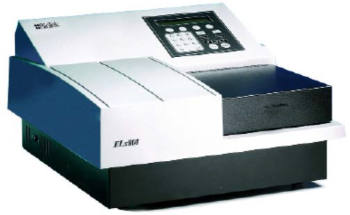 The BioChem Lab is equipped with the following analytical tools:
The BioChem Lab is equipped with the following analytical tools:
Benchtop lyophilizer (freeze-dryer LABCONCO) 2.5 L capacity, equipped with a touchscreen display, for the pre-treatment of solid matrices subsequently extracted with PLE.
Solid Phase Extraction (SPE):12 inlets of the solid phase extractor are connected to cartridges packed with specific adsorbents for the extraction of target compounds from liquid matrices through a vacuum system.
Syncore® Analyst (Buchi) for the simultaneous pre-concentration of liquid phase samples.
Rotavapor R 100 (Buchi), equipped with an electronic interface to control the vacuum system and the recirculating chiller.
Gas Chromatograph (Perkin Elmer, Clarus 480) coupled to a FID-ECD detector (Flame Ionization Detector- Electron Capture Detector). The instrument is connected to an autosampler (Autosystem, Perkin Elmer) and is controlled by TotalChrom Software.
Gas chromatograph (Thermo Fisher, Trace 3000) coupled to a mass spectrometry (MS) detector (Thermo Fisher, ISQ7000). The device is connected to an autosampler (Thermo Fisher. AI 1310) and is controlled by a Chromeleon software.
HPLC (quaternary pump, column Oven mod. LC-100 and Micro Pump Series 200, Perkin Elmer, USA) coupled to a fluorescence detector (Perkin Elmer Series 200a). The device is controlled by Chromeleon Software.
HPLC (binary pump, Vanquish TM Core HPLC system, Thermo Scientific TM, Italy) coupled to a high-resolution mass spectrometer (Orbitrap Exploris 120, Thermo Scientific TM, Italy). The device is controlled by XcaliburSoftware (version 5.1).
Spectrophotometer (Biolog Microstation System, Biolog Inc.) for the reading of microplates (96 positions). This instrument is controlled by specific software.
Contact person: Dr. Luisa Patrolecco – luisa.patrolecco AT cnr.it
Polar environments are highly biodiverse on a spatial temporal scale as well as at different levels of biological organization, from the molecular level to the entire ecosystem. Recent and rapid climatic and environmental changes give urgency to understanding the response of biological communities to these changes, and their impact in the short and long term. In this context, ISP researchers study the different bio-ecological aspects of the marine and terrestrial ecosystems of both poles. Their research is developed along four main often interconnected research fields.
Biodiversity and adaptation
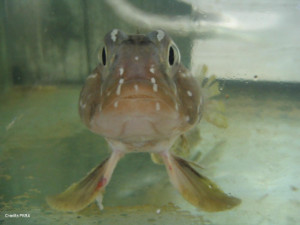 Polar biological communities are heavily influenced by several local factors concomitant to low temperatures, such as dryness, ice cover, poor nutrient availability, exposure to harmful solar radiation (e.g. UV-B radiation), extremely variable light periods and, in specific cases, high salinities and osmotic stress. Biodiversity guarantees the functioning of all ecosystems, so studying the properties and temporal evolution of polar ecosystem is fundamentally important for improving our knowledge of its current state and predicting its future development, particularly in the light of climate change. The analysis and monitoring of the biodiversity of biological communities and their ecological dynamics constitutes the focal point of this research topic. The study of the morphological-functional adaptation mechanisms adopted by polar organisms for survival in extreme conditions is particularly interesting.
Polar biological communities are heavily influenced by several local factors concomitant to low temperatures, such as dryness, ice cover, poor nutrient availability, exposure to harmful solar radiation (e.g. UV-B radiation), extremely variable light periods and, in specific cases, high salinities and osmotic stress. Biodiversity guarantees the functioning of all ecosystems, so studying the properties and temporal evolution of polar ecosystem is fundamentally important for improving our knowledge of its current state and predicting its future development, particularly in the light of climate change. The analysis and monitoring of the biodiversity of biological communities and their ecological dynamics constitutes the focal point of this research topic. The study of the morphological-functional adaptation mechanisms adopted by polar organisms for survival in extreme conditions is particularly interesting.
 PhD student in Polar Sciences at Ca' Foscari University of Venice, where he previously obtained a Master's Degree in Environmental Sciences. His research project aims to understand if in the recent period Svalbard has really changed their climatic regime defining the potential associated consequences.
PhD student in Polar Sciences at Ca' Foscari University of Venice, where he previously obtained a Master's Degree in Environmental Sciences. His research project aims to understand if in the recent period Svalbard has really changed their climatic regime defining the potential associated consequences.
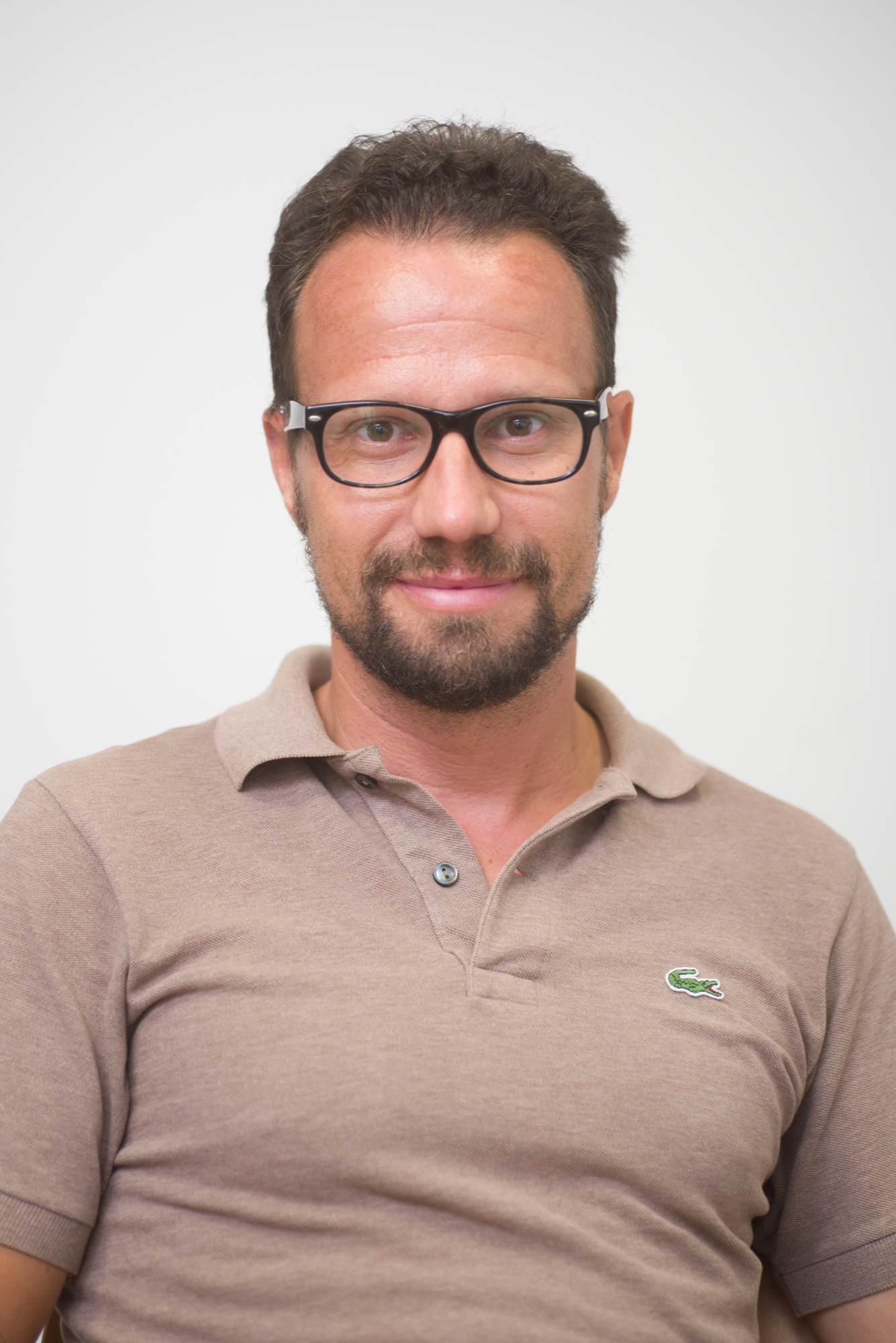 Associate Professor of Applied Geophysics at the Department of Geosciences, University of Padova. He has participated in numerous national and international projects in terrestrial and marine areas (IODP). He has been a visiting scientist at Boston University, USA, and twice at the ETH-SLF Institute, Switzerland. He was awarded the “G. Pialli” National Thesis Prize for Geophysics in 2004, the “Licio Cernobori” National Geophysics Prize in 2014 and the “Leonardo Da Vinci” Prize in 2020. His research interests include applied geophysics for the characterisation of the near surface, natural hazard scenarios and environmental geophysics with a focus on glacial and periglacial environments. He is author/co-author of more than 100 articles in international indexed journals.
Associate Professor of Applied Geophysics at the Department of Geosciences, University of Padova. He has participated in numerous national and international projects in terrestrial and marine areas (IODP). He has been a visiting scientist at Boston University, USA, and twice at the ETH-SLF Institute, Switzerland. He was awarded the “G. Pialli” National Thesis Prize for Geophysics in 2004, the “Licio Cernobori” National Geophysics Prize in 2014 and the “Leonardo Da Vinci” Prize in 2020. His research interests include applied geophysics for the characterisation of the near surface, natural hazard scenarios and environmental geophysics with a focus on glacial and periglacial environments. He is author/co-author of more than 100 articles in international indexed journals.
 Received his PhD in physics from Heidelberg University in 2011. He has worked in ice core and glaciological research at institutions in Germany, USA and Austria before receiving a Marie Skłodowska-Curie fellowship at the University of Venice (www.unive.it/gold-ice).
Received his PhD in physics from Heidelberg University in 2011. He has worked in ice core and glaciological research at institutions in Germany, USA and Austria before receiving a Marie Skłodowska-Curie fellowship at the University of Venice (www.unive.it/gold-ice).
He has participated in numerous field campaigns on remote glaciers in the European Alps, Kilimanjaro, Greenland and Antarctica. His recent focus lies on ice core research with laser ablation inductively-coupled plasma mass spectrometry (LA-ICP-MS).
More...
Where we are: the secondary office of the Institute of Polar Sciences of Bologna is located in the Research Area of Bologna. The ISP occupies a total area (offices and laboratories) of about 300 m2, distributed between 2 buildings, that are partly shared with ISAC (Institute of Atmospheric and Climate Science) and ISMAR (Institute of Marine Sciences) staff.
How to find us:
- by train: from Bologna Centrale train station you can take a taxi that will take you to your destination in 5 minutes, or you can take bus nr. 87 or nr. 37;
- by car: from the motorway take the Bologna Arcoveggio exit, from the ring road take exit no. 5, Lame District;
- by plane: from the Guglielmo Marconi airport you can take the Aerobus BLQ shuttle to the railway station, then a scheduled urban bus (as above), or you can take a taxi (cotabo.it, Phone:+39 051-372727 or taxibologna.it, Phone:+39 051-4590) which will take you to your destination in about 10 minutes.
Contact
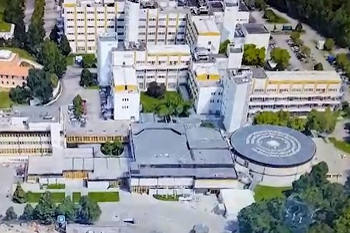 ISP Secondary office of Bologna
ISP Secondary office of Bologna
Responsable
Dr Stefano Miserocchi
E-mail: responsabile_bo AT isp.cnr.it
c/o Area della Ricerca di Bologna
Via P. Gobetti, 101 - 40129 Bologna (BO)
Phone:+39 051 6398880
Fax: +39 051 6398939
MAP
The BSRN was created to improve the quality of measurements of the Earth-atmosphere radiative fluxes that determine the thermal conditions and circulation of the atmosphere and the ocean. The ISP manages this observatory at the Italian-French Concordia station in Antarctica. Installed in 2006, the BSRN was funded by the PNRA and consists of a series of passive instruments (radiometers and photometers) that measure different components of the radiation balance (both in the solar and infrared spectrum), including the surface albedo.
In addition to these measurements, during the austral summer, the columnar content of aerosols is also measured by means of an SP02sun photometer, and the ultraviolet radiation spectrum by a UV-RAD radiometer, from which it is possible to obtain the ozone concentration, along the entire atmospheric column. Other measurements that are carried out as part of the observatory's activities are in collaboration with the Finnish Meteorological Institute (FMI) and concern the physical and optical properties of atmospheric particulate matter at ground level: its diffusion, absorption coefficients and dimensional distribution.
 I'm an analytical chemist specialised in trace elemental analysis, and trace element speciation studies. My goals include determining the role, fate and toxic effects of heavy metals in the environment and their impact on humanity. Recently I have been concentrating on mercury, it's atmospheric concentrations and presence in snow, ice and ground water, with particular emphasis on deposition phenomena. I have participated in 2 Antarctic Expeditions to Concordia Station and am the Italian National Expert on the POPs and Mercury Expert Groups of AMAP, the Arctic Monitoring and Assessment Program as well as on the Arctic Contaminants Action Program (ACAP).
I'm an analytical chemist specialised in trace elemental analysis, and trace element speciation studies. My goals include determining the role, fate and toxic effects of heavy metals in the environment and their impact on humanity. Recently I have been concentrating on mercury, it's atmospheric concentrations and presence in snow, ice and ground water, with particular emphasis on deposition phenomena. I have participated in 2 Antarctic Expeditions to Concordia Station and am the Italian National Expert on the POPs and Mercury Expert Groups of AMAP, the Arctic Monitoring and Assessment Program as well as on the Arctic Contaminants Action Program (ACAP).
I have co-authored over 64 publications and I am a writer for the Atomic Spectrometry Updates Environmental Analysis review of the Royal Society of Chemistry. I obtained my degree in Environmental Chemistry from the University of East Anglia, followed by an M.Sc in Analytical Chemistry, I obtained my Ph.D from the University of Plymouth in 1996.
Scopus - Author ID: 7003572964 Research Gate: Warren Cairns
 Graduated in Chemistry in 1993, obtained a PhD in 1997, she has been a senior technologist at ISPRA since 2021 and a technologist since 2005. Specializing in the chemical contamination of freshwater and marine environments, sediments, and soil, over the years, she has carried out numerous activities, including chemical and ecotoxicological laboratory work aimed at developing analytical methodologies and environmental indicators. She has also been involved in fieldwork, including participation in four expeditions to Antarctica, two of which she coordinated the project personnel. Her activities also encompass training, processing and validating chemical data from environmental monitoring, and providing support to ministries and other entities.
Graduated in Chemistry in 1993, obtained a PhD in 1997, she has been a senior technologist at ISPRA since 2021 and a technologist since 2005. Specializing in the chemical contamination of freshwater and marine environments, sediments, and soil, over the years, she has carried out numerous activities, including chemical and ecotoxicological laboratory work aimed at developing analytical methodologies and environmental indicators. She has also been involved in fieldwork, including participation in four expeditions to Antarctica, two of which she coordinated the project personnel. Her activities also encompass training, processing and validating chemical data from environmental monitoring, and providing support to ministries and other entities.
Currently, she manages and participates in environmental research activities related to the management of chemical contamination and the diffusion processes of contaminants, in line with the institutional activities of the Institute. In recent years, she has provided technical-scientific support for activities related to the collection and organization of databases related to the monitoring of different types of water, to be transmitted at the European level (EIONET Soe). She is the national representative (NRC) for Marine, coastal, and maritime issues at the European Environment Agency.
In past years, she has provided technical-scientific support for reporting activities related to the Nitrates Directive, activities related to the management and reclamation of some Sites of National Interest, the IPPC/AIA Commission, and the VIA Commission. For about 20 years, she has been involved in polar environment research, starting during her academic years and continuing to the present. She currently coordinates a Collaboration Agreement with the British Antarctic Survey (BAS). She is involved in several national and international research projects and has produced more than 80 refereed and non-refereed scientific publications.
 Ministero dell'Universita e Ricerca
Ministero dell'Universita e Ricerca
Programma Ricerche Artico
Programma Nazionale di Ricerca in Antartide
 Ministero degli Affari Esteri e della Cooperazione Internazionale
Ministero degli Affari Esteri e della Cooperazione Internazionale
L'Italia e l’Artico
L’Italia e l’Antartide
CNR-ISP
National Research Council
Institute of Polar Sciences
c/o Scientific Campus - Ca' Foscari University Venice - Via Torino, 155 - 30172 VENEZIA MESTRE (VE)
Phone: +39 041 2348547 - E-mail: protocollo.isp AT pec.cnr.it
Fax: +39 041 2348 549 - Codice Fiscale: 80054330586 - P.I.:02118311006
Unless otherwise indicated, the content of this site is licensed : Attribution Non Commercial Share Alike 4.0 International (CC BY-NC-SA 4.0)
Privacy policy e Cookie policy - Transparent administration (CNR)
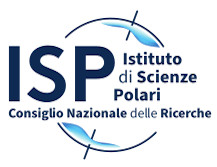






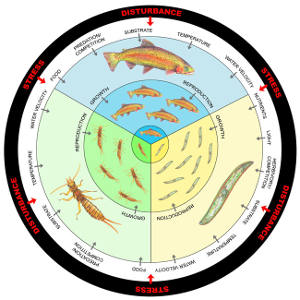
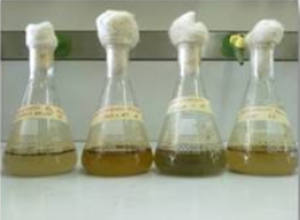 Deeper understanding of biological processes and recent advances in biotechnology allow us to use the natural world to progress in various industries, such as in the development of drugs and food additives. In general, the term bioprospecting is used to indicate the exploration of living beings and biological materials for biomolecules that may be useful to humans. In this field, poorly known or poorly described genetic resources have a great potential for the discovery of new and valuable natural products. Therefore, polar organisms, given their unusual metabolic abilities and physiological adaptations to extreme environmental conditions, are well suited for this purpose. Furthermore, the possible future potential of polar organisms in of the bioremediation of pollutants, even persistent ones, at low temperatures should not be overlooked.
Deeper understanding of biological processes and recent advances in biotechnology allow us to use the natural world to progress in various industries, such as in the development of drugs and food additives. In general, the term bioprospecting is used to indicate the exploration of living beings and biological materials for biomolecules that may be useful to humans. In this field, poorly known or poorly described genetic resources have a great potential for the discovery of new and valuable natural products. Therefore, polar organisms, given their unusual metabolic abilities and physiological adaptations to extreme environmental conditions, are well suited for this purpose. Furthermore, the possible future potential of polar organisms in of the bioremediation of pollutants, even persistent ones, at low temperatures should not be overlooked.
